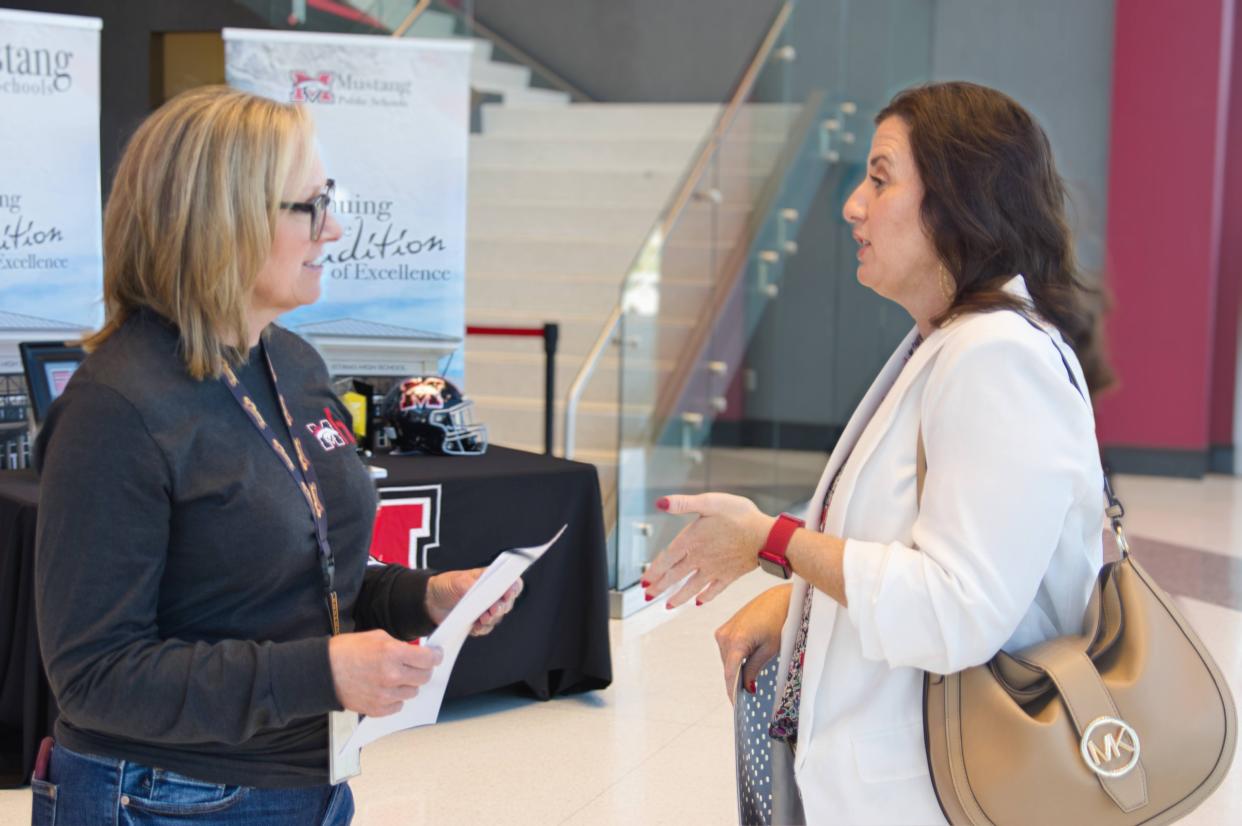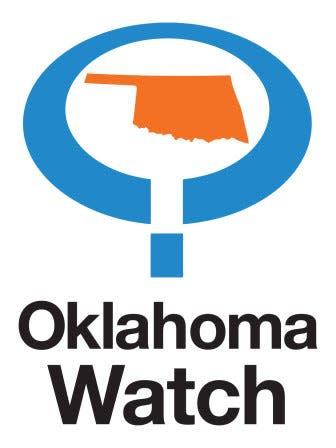Oklahoma teachers still leaving the classroom despite salary increases

Teacher turnover hit its highest point since the pandemic last school year, when more than 6,000 Oklahoma public school teachers left the classroom.
The crush of school departures occurred even as the state implemented the largest salary increase for educators since 2018 at $3,000 to $6,000 per teacher, depending on experience.
“There’s no question: overall, there continues to be a serious crisis,” said Chris Tobler, director of human resources for Mustang Public Schools, the state’s 11th largest district.
According to an analysis of certified teacher data from the Oklahoma Department of Education:
6,065 classroom teachers employed in 2022-23 did not return this year. That’s nearly 14% of the total teaching workforce.
Nearly 1,000 of those who left were in their first year of teaching. Almost half had five or fewer years of experience.
The number and percentage of teachers who left increased each year since 2019-20, when the coronavirus pandemic began.
Why are teachers leaving? Pay and overwhelming stress
Oklahoma’s teacher shortage dates back more than a decade. The number of educators leaving the profession has increased, while enrollment in Oklahoma colleges of education declined 86% between 2008 and 2021, the most of any state, an analysis by Penn State found. Once a stopgap measure, staffing classrooms with emergency certified teachers, who have a bachelor’s degree but lack formal training in teaching, is now routine.
COVID-19 upended education and continues to have a negative effect on students’ academic performance, emotional well-being and behavior. That makes it harder to teach. In a recent survey, 77% of teachers said their job is frequently stressful and 68% said it’s overwhelming; just over half, 53%, described their job as enjoyable, according to survey data from the Pew Research Center, a source of data and analysis.
The most common reason for dissatisfaction was pay, according to the survey, with only 15% of teachers reporting they are extremely or very satisfied with their salary.
Increases in the minimum salaries for Oklahoma educators went into effect this school year, raising the average salary for a classroom teacher to more than $61,000. That is helping with retention and recruitment, human resources managers at several Oklahoma school districts said.

Commentary: Oklahoma has a teacher shortage crisis. How do we entice them back to the classroom?
Human resources directors at both Mustang and Edmond Public Schools said the number of resignations they are seeing at this point in the school year are down from where they would be normally.
But the candidate pool to fill those positions is still very shallow.
“It’s a struggle,” said Randy Decker, executive director of human resources for Edmond Public Schools.
The legislature has made some big improvements in teacher salaries, he said, but the economy has eaten away a lot of the gains. Salaries need to be a continued, long-term focus, he said.
Bartlesville Public Schools, 45 miles north of Tulsa, had 69 teaching positions to fill the past two years, up from about 50 to 60 in the years before the pandemic, said Granger Meador, the district’s executive director of technology and communications.
“We are grateful that the legislature has been investing in boosting teacher salaries in the past few years,” he said. “Otherwise, we would be back to where we were before 2018, with many teachers taking off for better-paying positions in Kansas, Texas, etc.”
Commentary: How state Superintendent Ryan Walters says he's addressing Oklahoma's teacher shortage
Oklahoma teachers are getting increases in pay. But other challenges are driving them to leave
Still, there are other challenges. There’s the state’s total spending per student, which is lower than most states. That means teachers have fewer resources, like small class sizes, counseling, and other supports.
And one in five Oklahoma children lives in poverty, above the national average. Poverty has a negative effect on students’ ability to learn and can impair brain growth and functioning, studies have found.
In addition to better salaries, improving teachers’ working conditions help solve educator shortages, according to the National Education Association. Some of the legislature’s initiatives, like maternity leave and the additional school funding approved for this school year, could help with that.
Tobler, in Mustang, said they are working extra hard to make teachers feel supported.
“The emotional, mental and physical well-being of our teachers and the support of our teachers is the number one priority right now in Mustang Public Schools, after students, which are always our top priority,” he said.
One initiative positively affecting the pipeline of educators is the Inspire to Teach program, passed by the legislature in 2022, said Goldie Thompson, the associate vice chancellor for teacher preparation and special programs at the Oklahoma State Regents for Higher Education.
Currently, 4,500 students participate in Inspired to Teach, which awards students pursuing a teaching degree $1,000 to $2,500 per year, then stipends of $4,000 per year in their first five years teaching in an Oklahoma public school.
Colleges have seen 10% growth in students in teacher prep programs, Thompson said, and fewer students are leaving the programs before completion. Those types of reward programs, coupled with salary improvements and additional supports for teachers, are what’s needed to end the shortage. But that takes time, she said.
“Whenever you’ve had a decline that started years prior, it’s not going to be a silver bullet to reverse that trend overnight,” Thompson said.
Oklahoma Watch, at oklahomawatch.org, is a nonprofit, nonpartisan news organization that covers public-policy issues facing the state.
This article originally appeared on Oklahoman: Oklahoma teacher turnover is at its highest since COVID

